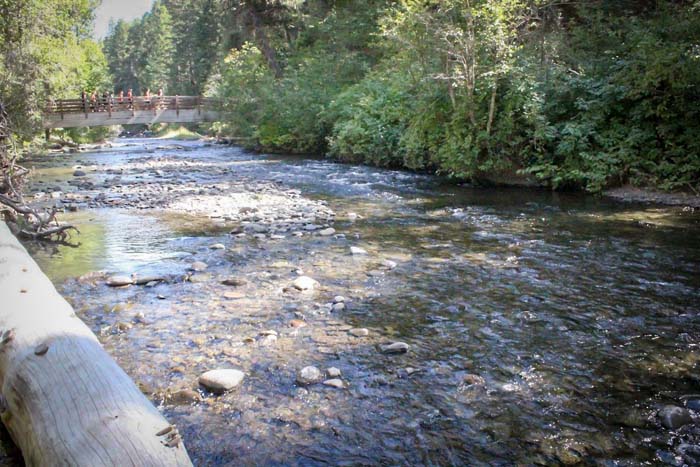Touring China on eve of Summer Olympics
Published 11:56 am Saturday, July 19, 2008

- One of many performances Tom and Barb Dimond attended in China. - Photos/TOM DIMOND
Fog often shrouds China’s Yangtze River, and air pollution frequently clouds many of its cities.
Trending
Still, Tom and Barb Dimond of Cove had no trouble finding clarity and wonderment during a recent tour of China.
The Dimonds received a clear look at the manic intensity of China’s government as it prepares to host the Summer Olympic Games in Beijing.
They also received intriguing glimpses of glorious remnants of the nation’s storied past.
Trending
All this and more, much more during a two-week visit to China.
The present is a remarkable time to be in China because of a perfect storm of sorts – the nation is developing at an explosive rate and preparing to host the Summer Olympics, which begin Aug. 8.
China’s economic growth rate over the past decade is extraordinary, something its ultra modern cities, some of which were almost rural-like decades ago, reflect.
“It is kind of like they are discovering the industrial revolution,” Tom said. “They just got there and are catching up to the rest of the world.”
This environment becomes feverish when the Olympic Games, a coming out party of sorts for the global super power, is added to the mix.
The intensity surrounding the nation’s anticipation of the Summer Games was most apparent to the Dimonds while they were in Shanghai while the Olympic torch was coming through via a relay. People 30-deep lined both sides of the path the torch came through “… in both directions for as far as the eye could see,” Tom said.
Security was so tight it was almost unimaginable. An entire regiment of troops and police officers also lined the torch carriers’ route.
“It reminded everyone that absolutely nothing (in terms of misbehavior) would be tolerated,” Dimond said.
The Olympic torch relay has sparked controversy in other places where people protested things like China’s long occupation of Tibet. Many in the international community object to the occupation but the Chinese people see it differently.
“They look at Tibet as if it has always been a part of China. They have defended it. Tibet (to the Chinese people) is like Alaska is to us. It is all a matter of perspective,” Barb said.
Tom agrees. He said that China’s young people look at Tibet’s efforts to gain independence in the same way we would look at Alaska trying to secede from the United States.
The Dimonds did not come close to the Olympic torch in Shanghai but they did get a great look at something on the other end of history’s spectrum – the Great Wall of China. The 4,000-mile-long wall was built more than 2,000 years ago.
“Seeing the wall was the most phenomenal visual experience,” Tom said.
He noted that the entire wall sits four stories off the ground, something most people do not realize until they see it in person. So tall is it that it “looks like a castle wall which never ends.”
Tom, a retired EOU art professor, was also struck by the steep terrain much of the wall is built on. The wall hits all elevation high points along its 4,000 miles.
“It follows the contours of mountains, it follows the summits of peaks,” Tom said.
The wall, made of large bricks, has stood for more than 2,000 years and appears ready to stand for more millenniums.
“It is solid. Its mortar is harder than its bricks,” Tom said.
Graffiti is written everywhere on the wall’s bricks.
“When it comes to one of the wonders of the world people want to scratch their names into it,” he said.
The Dimonds also became familiar with one of the natural wonders of the world, the Yangtze River, during their trip. The Yangtze, at 3,780 miles, is the longest river in Asia . The Dimonds spent four days traveling on it. They were struck by its high humidity, one which creates a great deal of fog. There are several dams on the river and plans are in place to build a new one that will raise the water level 175 meters in places. The dam’s creation will displace 1.4 million people. The government will compensate those who will have to relocate. Still, moving will be an unpleasant experience for most people, but those affected are not complaining, Tom said. They understand that the hydro power generated by the dam will benefit the nation as a whole. They feel social responsibility for the common good, Tom said.
“Everyone has the mindset that doing what provides the greatest good for the greatest number is what is best,” Barb said.
Before and after their cruise of the Yangtze River the Dimonds visited many historical displays, the most memorable being the Terracotta Army they saw in Shang Xi Province. The Terracotta Army is a collection of 8,000 life-size clay soldiers, 130 chariots and almost 800 horses, all of which were buried with Shi Huang Di, the first emperor of China who died around 210 B.C. The Terracotta Army was discovered in 1974 in by a farmer near Mount Li.
“Some people call it the eighth wonder of the world. That is conservative,” Tom Dimond said. “It is absolutely phenomenal.”
The Terracotta Army was found in buildings the size of which is hard to comprehend considering when they were built. Tom said the structure the ceramic soldiers he saw were from a building 25 times the size of EOU’s Quinn Coliseum.
Such structures are to hard to comprehend, just like the ones the Dimonds saw in Beijing at the site of the upcoming Olympics. They include the Olympic village where athletes will live.
“It is like a town of huge condominiums,” Tom said.
An even more stunning site is the building where the swimming and diving competition will be conducted. It has a reflective bubble exterior that is the color of water. The exterior has the look of skylights. Tom said Olympic athletes will be floored by such structures in Beijing.
“(The Olympic site) is like Disneyland on steroids, but it is not a cartoon. It is leading-edge architecture,” Tom said.









